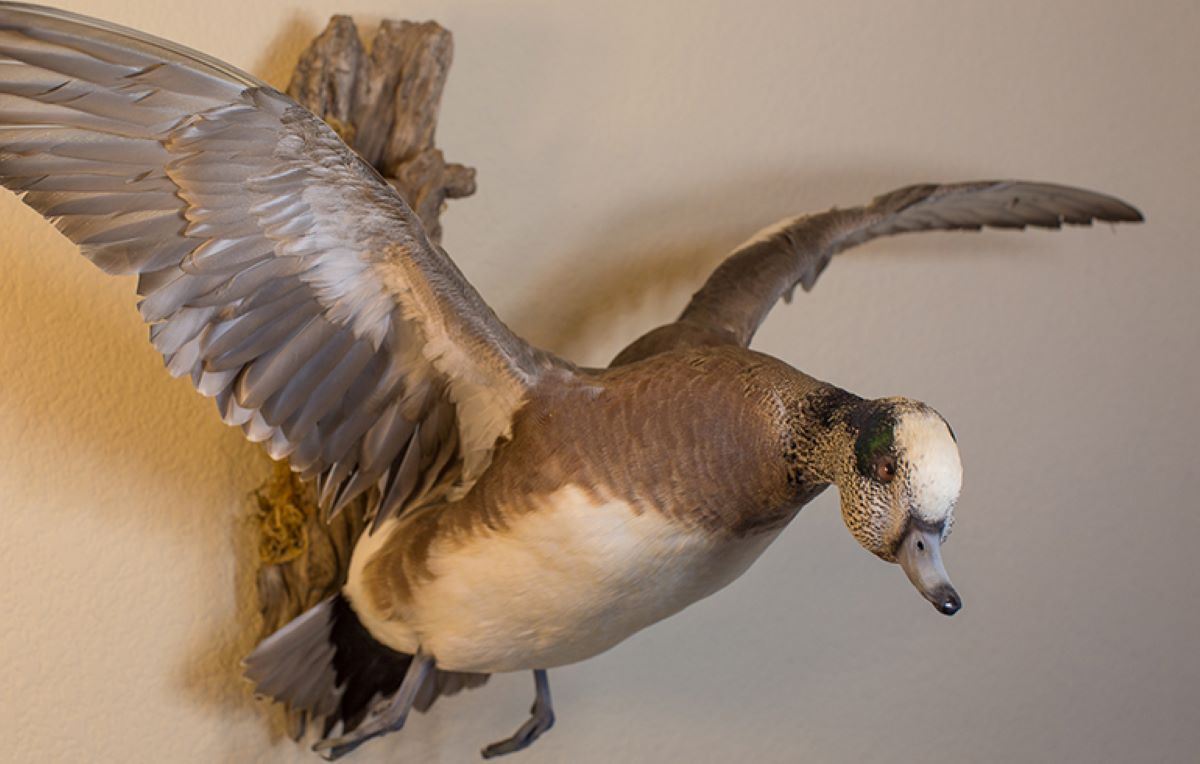

Articles
How To Store Duck Fat
Modified: October 27, 2024
Learn the best techniques and tips for storing duck fat in this informative article. Keep your duck fat fresh and flavorful with proper storage methods.
(Many of the links in this article redirect to a specific reviewed product. Your purchase of these products through affiliate links helps to generate commission for Storables.com, at no extra cost. Learn more)
Introduction
Are you a fan of rich and flavorful dishes? If so, then you’ll definitely want to know how to store duck fat. Duck fat is a versatile and prized ingredient in the culinary world, known for its unique taste and ability to enhance the flavors of a wide variety of dishes. Whether you’re an avid home cook or a professional chef, having duck fat on hand can elevate your cooking to a whole new level.
In this article, we’ll explore the importance of storing duck fat and share valuable tips on how to do it properly. From understanding the sources of duck fat to learning about the various preservation methods, we’ll cover all the essential information you need to make the most of this delectable ingredient.
So, why should you bother storing duck fat in the first place? Well, there are several reasons why it’s worth the effort.
Key Takeaways:
- Store duck fat to enhance flavor, texture, and moisture in your dishes. Whether refrigerating, freezing, or canning, proper preservation ensures you always have this versatile ingredient on hand for culinary creativity.
- Utilize stored duck fat to elevate your cooking, from roasting and frying to baking and flavoring. Embrace the rich, savory taste and traditional culinary heritage for delightful, impressive dishes.
Read more: How To Store Fat Quarters
Why Store Duck Fat?
Storing duck fat allows you to have this precious ingredient readily available whenever you need it. Here are a few compelling reasons why you should consider storing duck fat:
- Enhanced Flavor: Duck fat has a distinct and rich flavor profile that can add depth and complexity to your dishes. It imparts a unique savory taste that is highly sought after by chefs and home cooks alike. By storing duck fat, you ensure that you always have it on hand to elevate the flavors of your recipes.
- Versatility: Duck fat is incredibly versatile and can be used in various cooking methods. It has a high smoke point, which means it can withstand high temperatures without breaking down. This makes it ideal for frying, roasting, sautéing, and even baking. Storing duck fat allows you to experiment with different cooking techniques and explore a wide range of culinary possibilities.
- Texture and Moisture: Duck fat has a unique texture that adds a luxurious mouthfeel to your dishes. It can also help lock in moisture, resulting in tender and flavorful meats. By storing duck fat, you can easily incorporate it into recipes to enhance both the texture and moisture content of your dishes.
- Long Shelf Life: Duck fat has a relatively long shelf life when stored properly. By following the correct preservation methods, you can extend the lifespan of duck fat and avoid wastage. This allows you to stock up on duck fat when it’s available and enjoy its benefits for a longer period.
- Traditional Ingredient: Duck fat has been used in traditional cooking for centuries. It is a staple in French cuisine, where it is valued for its flavor and cooking properties. By storing duck fat, you can embrace the traditions of classic cooking techniques and introduce a touch of culinary heritage to your own recipes.
With these compelling reasons in mind, let’s now explore the various sources of duck fat and how to preserve it effectively.
Sources of Duck Fat
Before diving into the preservation methods, it’s important to understand where you can obtain duck fat. There are a few common sources for acquiring this flavorful ingredient:
- Rendering Duck Fat: Rendering duck fat is the process of melting down the fat from duck meat. You can do this at home by trimming excess fat from duck legs, breasts, or the whole bird and then cooking it low and slow until the fat renders out. This DIY method allows you to control the quality and quantity of the duck fat you obtain.
- Purchasing Duck Fat: If you don’t have access to fresh duck fat or prefer a convenient option, you can purchase duck fat from specialty grocery stores or online. Look for reputable sources that sell high-quality duck fat. It’s important to check the expiration date and ensure that the packaging is intact before making a purchase.
- Leftover Duck Fat: If you’ve cooked duck dishes before, you may have leftover duck fat from the cooking process. Don’t let it go to waste! Store any excess duck fat for future use. This is a great way to ensure that you maximize the utilization of all parts of the bird and enhance the flavors of your future meals.
- Butcher Shops and Farmers Markets: Some butcher shops or farmers markets may offer rendered duck fat as a specialty item. These establishments often have close ties to local farms or suppliers, ensuring that you’re getting fresh and high-quality duck fat.
Now that you know where to obtain duck fat, let’s explore the most effective methods for preserving this culinary treasure to extend its shelf life.
Preservation Methods
Properly preserving duck fat is crucial to maintain its quality and extend its shelf life. There are a few tried-and-true methods for preserving duck fat, depending on your preference and usage:
- Refrigeration: Storing duck fat in the refrigerator is a common method that ensures easy access and convenience. To do this, strain the rendered duck fat to remove any impurities and pour it into a clean and airtight container. Make sure the container is sealed tightly to prevent oxidation and absorption of other food odors. Duck fat stored in the refrigerator can last for several months.
- Freezing: Freezing duck fat is an excellent option for long-term preservation. Similar to refrigeration, strain the rendered duck fat and transfer it into a freezer-safe container or zip-top bag. Squeeze out any excess air to prevent freezer burn. Duck fat stored in the freezer can retain its quality for up to a year or even longer.
- Canning: Another method for preserving duck fat is canning it in sterilized jars. This method requires processing the jars in a water bath to create a seal. Canning is a great option if you want to store larger quantities of duck fat for an extended period. However, it does require proper equipment and following specific canning guidelines to ensure safety.
Each preservation method has its advantages, so choose the one that aligns with your needs and cooking habits. Refrigeration offers easy access, while freezing provides long-term storage. Canning is ideal if you want to store larger batches of duck fat and have the necessary equipment.
Now that you know how to preserve duck fat, let’s delve into the specific steps for storing duck fat in the refrigerator and freezer.
Note: Remember to always label your stored duck fat with the date to keep track of its freshness.
Store duck fat in an airtight container in the refrigerator or freezer. It can last for up to 6 months in the fridge and up to a year in the freezer. Always label the container with the date it was stored.
Storing Duck Fat in the Refrigerator
Storing duck fat in the refrigerator is a popular method that allows for easy access and convenient use. Follow these steps to safely store duck fat in the refrigerator:
- Strain: Before storing duck fat in the refrigerator, strain it through a fine-mesh sieve or cheesecloth to remove any impurities or solids. This ensures that your stored duck fat remains clean and free from any debris.
- Prepare a Container: Choose a clean and airtight container with a secure lid that can effectively seal in the duck fat. Glass jars or food-grade plastic containers work well for this purpose. Avoid using containers made of materials that may absorb odors or flavors.
- Pour and Seal: Carefully pour the strained duck fat into the prepared container, leaving some headspace at the top. This allows for expansion as the fat solidifies in the refrigerator. Seal the container tightly to prevent air exposure, which can cause oxidation and spoilage.
- Label: Don’t forget to label the container with the date to keep track of its freshness. Duck fat stored in the refrigerator can maintain its quality for several months, but it’s always wise to use it within a reasonable timeframe.
- Store: Place the sealed container of duck fat in the refrigerator, preferably on a shelf toward the back where it remains consistently cool. Avoid storing it in the door or near other strong-smelling foods, as duck fat can absorb odors easily.
- Usage: When you’re ready to use the stored duck fat, simply remove it from the refrigerator and scoop out the desired amount. Let it come to room temperature or gently warm it on the stove to return it to a liquid state, as refrigeration will cause the fat to solidify.
By following these steps, you can conveniently store duck fat in the refrigerator and have it readily available to enhance the flavors of your favorite dishes. Next, let’s explore how to store duck fat in the freezer for long-term preservation.
Read more: How To Store Beef Fat
Storing Duck Fat in the Freezer
If you prefer to have a longer-term storage option for your duck fat, freezing it is the way to go. Follow these steps to store duck fat in the freezer:
- Strain: Similar to storing duck fat in the refrigerator, start by straining the rendered fat to remove any impurities or solids. This helps ensure that your stored duck fat remains clean and of high quality.
- Prepare Freezer-Safe Containers: Choose freezer-safe containers or zip-top bags that are durable and able to withstand freezing temperatures. Make sure the containers are clean and dry before use.
- Portion and Label: Divide the strained duck fat into smaller portions based on your cooking needs. This allows for easier portioning when it comes time to use the frozen duck fat. Label the containers or bags with the date of freezing to keep track of freshness.
- Fill and Seal: Carefully transfer the strained duck fat into the containers, leaving some headspace at the top to allow for expansion as the fat solidifies. Seal the containers tightly to prevent freezer burn and oxidation. If using zip-top bags, remove as much air as possible before sealing.
- Stack and Freeze: Place the sealed containers or bags of duck fat in the freezer. Arrange them in a flat and stackable manner to optimize freezer space. Allow enough space for air circulation around the containers to ensure proper freezing.
- Storage Duration: Duck fat stored in the freezer can retain its quality for up to a year or longer. However, it’s recommended to use it within a reasonable timeframe for the best flavor and texture.
When you’re ready to use the frozen duck fat, simply remove the desired portion from the freezer and allow it to thaw in the refrigerator overnight. Alternatively, you can thaw it gently on the stove over low heat. Once thawed, the duck fat can be used in your favorite recipes to add a rich and delicious flavor.
By following these steps, you can easily store duck fat in the freezer, ensuring that you have this flavorful ingredient on hand whenever you need it.
Now that you know how to store duck fat in both the refrigerator and the freezer, let’s move on to some helpful tips for using stored duck fat.
Tips for Using Stored Duck Fat
Using stored duck fat in your cooking can elevate the flavor and texture of various dishes. Here are some tips to make the most out of your stored duck fat:
- Roasting: Use duck fat to coat vegetables before roasting. The fat helps create a crispy exterior and imparts a delicious flavor to the vegetables.
- Frying: Duck fat’s high smoke point makes it ideal for frying. Use it to fry potatoes, chicken, or other ingredients to achieve a golden and crispy texture.
- Sautéing: Add a spoonful of duck fat to your sauté pan to enhance the flavors of onions, mushrooms, and other aromatic ingredients.
- Baking: Substitute butter or oil with duck fat in recipes like pie crusts, biscuits, and pastries for a unique and rich flavor. The fat adds a tender and flaky texture to baked goods.
- Popcorn Topping: Melt a small amount of duck fat and drizzle it over freshly popped popcorn, then sprinkle with salt for a gourmet twist on a classic snack.
- Flavoring Stocks and Soups: Enhance the depth of flavor in homemade stocks, soups, or stews by adding a spoonful or two of duck fat. It adds richness and complexity to the overall taste.
- Grilling: Brush melted duck fat onto meats, fish, or vegetables before grilling to promote caramelization and impart a luscious taste.
- Making Confits: Duck fat is a key component in making confit, a traditional French cooking method. Use your stored duck fat for confit preparations to achieve tender and flavorful results.
- Flavoring Sauc
Conclusion
Knowing how to store duck fat properly is a valuable skill that can enhance your culinary endeavors. Whether you render the fat yourself, purchase it, or have leftover fat from previous cooking, storing duck fat allows you to have this flavorful ingredient on hand whenever you need it.
By following the preservation methods outlined in this article, you can ensure that your stored duck fat remains fresh and of high quality. Whether you choose to store it in the refrigerator, freezer, or can it, each method has its advantages and allows for convenient usage based on your cooking needs.
Remember to strain the duck fat before storing to remove any impurities, use clean and airtight containers, and label them with the date of storage to keep track of freshness. By doing so, you can extend the shelf life of your duck fat and savor its delightful flavor for an extended period.
Once you have your stored duck fat, the culinary possibilities are endless. Use it to enhance the flavor and texture of various dishes, from roasting vegetables to frying chicken or baking pastries. Its rich, savory taste can elevate your recipes to new heights and impress your family and friends.
So, don’t let that precious duck fat go to waste. Store it properly and unleash its potential in your cooking. Experiment, explore, and savor the delight of using stored duck fat in your culinary creations.
Now that you have the knowledge and tips on how to store duck fat, it’s time to get cooking and enjoy the fantastic flavors it brings to your dishes! Happy cooking!
Frequently Asked Questions about How To Store Duck Fat
What are the benefits of storing duck fat?Storing duck fat allows you to extend the shelf life of this flavorful cooking ingredient. It also helps you reduce waste by preserving the fat for future use in various recipes.Can I store duck fat in the refrigerator?Yes, you can store duck fat in the refrigerator. It’s a great way to keep it fresh for a longer period. Just make sure to use an airtight container to prevent any odors from affecting the flavor of the fat.How long can I store duck fat in the freezer?Duck fat can be stored in the freezer for up to 6 months. Freezing helps maintain the quality and flavor of the fat, making it a convenient option for long-term storage.What are some creative ways to store duck fat?You can store duck fat in ice cube trays for easy portioning, or use mason jars for larger quantities. Another creative idea is to infuse the fat with herbs or spices before storing to add extra flavor to your dishes.Is it necessary to strain duck fat before storing?Yes, it’s recommended to strain duck fat before storing to remove any impurities or food particles. This helps prolong the shelf life and ensures that the fat remains clean and ready to use in your cooking.
Was this page helpful?
At Storables.com, we guarantee accurate and reliable information. Our content, validated by Expert Board Contributors, is crafted following stringent Editorial Policies. We're committed to providing you with well-researched, expert-backed insights for all your informational needs.















0 thoughts on “How To Store Duck Fat”